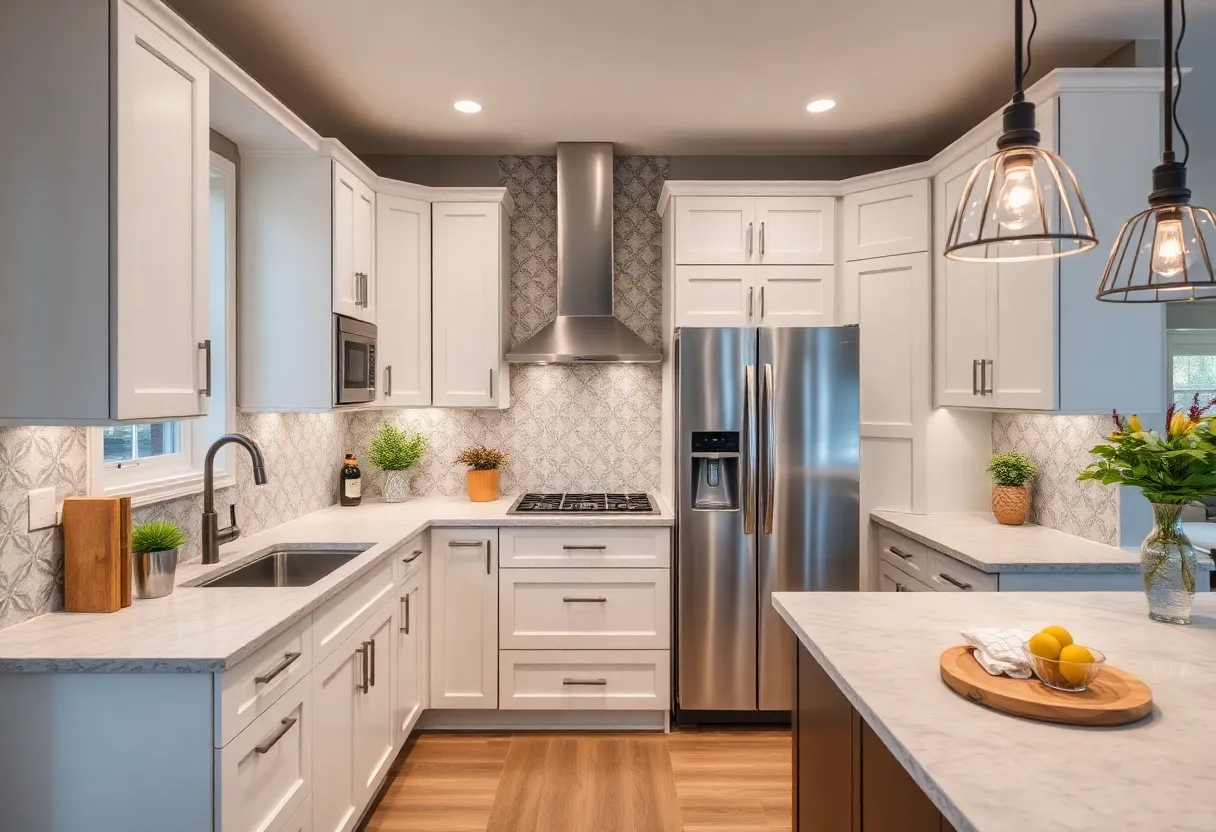Step-by-Step Guide to a DIY Kitchen Remodel: Save Money and Stay on Trend
A DIY kitchen remodel is an excellent way to breathe new life into one of the most important spaces in your home. Not only can it enhance your cooking experience, but it can also significantly boost your home’s value. This guide will cover everything you need to know about remodeling your kitchen yourself, from planning to execution.
Why Choose a DIY Kitchen Remodel?
A DIY kitchen remodel allows you to save money by eliminating labor costs associated with hiring a contractor. Additionally, you gain complete control over the design and materials, enabling you to create a space that reflects your unique style. Lastly, undertaking this project can be fulfilling, providing you with a sense of accomplishment.
Before You Start: Planning Your Remodel
1. Set a Budget
Before you pick up a hammer, determine how much you are willing to spend. Identify essential elements such as cabinetry, countertops, flooring, lighting, and appliances. Allocate a budget for each component, making sure to set aside 10-20% for unexpected expenses.
2. Define Your Style
Your kitchen style should align with your preferences and the overall aesthetic of your home. Research current kitchen design trends, such as farmhouse, modern, or industrial styles. Create a mood board to help visualize your desired look.
3. Measure Your Space
Accurate measurements are crucial for ensuring your new layout works. Measure the dimensions of your kitchen, noting the location of windows, doors, and plumbing fixtures. Sketch a floor plan to visualize the new layout.
Key Elements of Your Kitchen Remodel
1. Cabinets
The cabinets often set the tone for your kitchen. Consider refacing existing cabinets or opting for open shelving to reduce costs. If new cabinets are necessary, look for budget-friendly options from local retailers or online marketplaces.
2. Countertops
Countertops significantly influence your kitchen’s appearance. Popular materials include granite, quartz, and butcher block. Depending on your budget, you may choose laminate counters for a cost-effective solution.
3. Flooring
Choose flooring that is durable and easy to install. Options like vinyl, laminate, and tile are all popular and relatively affordable choices. Make sure the flooring complements your intended design theme.
4. Lighting
Lighting plays a crucial role in your kitchen’s ambiance. Consider incorporating different types of lighting, including task, ambient, and accent lighting. Pendant lights over the island can add style, while under-cabinet lighting enhances functionality.
5. Appliances
New appliances can set the tone for your kitchen remodel. Look for energy-efficient options that fit your design style. You may also consider buying gently used appliances to save money.
Executing Your DIY Kitchen Remodel
1. Demolition and Cleanup
Begin by removing outdated fixtures, cabinets, and appliances. Wear safety gear, including gloves and goggles. Dispose of debris responsibly, recycling materials whenever possible.
2. Install Cabinets
Start by installing upper cabinets first. Use a level to ensure they are even. For lower cabinets, secure screws into wall studs for stability. Follow manufacturer instructions for assembly and installation carefully.
3. Countertop Installation
Once the cabinets are in place, measure and install the countertops. If using solid materials, you may need professional help for cutting and fitting. Ensure a tight fit for a seamless appearance.
4. Flooring
Install your chosen flooring following the manufacturer’s instructions. Make sure the surface is clean and dry. Properly acclimate materials to avoid future warping or damage.
5. Plumbing and Electrical Work
If your remodel involves changing appliance locations, you may need to hire a licensed plumber or electrician for compliance with local codes. Ensure that all connections are secure and functioning properly.
6. Final Touches
Once the large tasks are complete, focus on the final details. Install hardware, apply paint or finishes, and add decorative elements that reflect your style. Don’t forget to clean the kitchen thoroughly before claiming it as complete.
Maintaining Your Newly Remodeled Kitchen
A DIY kitchen remodel requires maintenance to retain its appeal. Regularly clean countertops, cabinets, and floors to prevent wear. Address any issues promptly, such as loose hardware or leaks.
Conclusion
Remodeling your kitchen can be an exciting endeavor. With careful planning and execution, you can create a space that not only meets your needs but also stays on trend without breaking the bank. Embrace the challenge and enjoy the transformation that comes with a DIY kitchen remodel.








